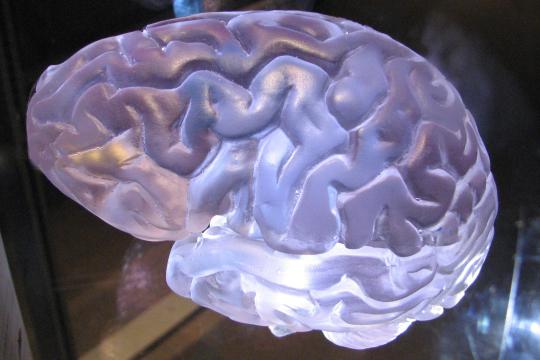Gaia Vince @ 5x15 - Hacking the nervous system
“The pathway for everyone spiritually, no matter what their religion, is through the nervous system.”
- Dr. Peter Van Houten, M.D.
Neuro theology is the study of the impact that spiritual practices have on the brain and nervous system and also the influence of the brain and nervous system on the spiritual practices that we choose. One practice in particular has a profound effect on the nervous system which during recent studies has been shown to improve the symptoms of many diseases.
One evening I was sitting in bed with my partner as she was reading this book called ‘Adventures in the Anthropocene: A Journey to the Heart of the Planet We Made’ By Gaia Vince. Which from my understanding (as I haven’t read the book yet) is a travelogue/science journal about her perspective of life on Earth and consequently our future as we enter into, what many scientists are declaring as, the Anthropocene, The Age of Man. A Highly interesting subject and judging by my girlfriends raving review I will most certainly be reading it.
Due to it being such an interesting subject I decided to google the author. I think the first link that appeared was a TEDx talk about Vagas Nerve Stimulation(VNS). The Vagas Nerve, very briefly, is one of the main ways the organs of the body communicate to the brain. There are mechanisms to explain signals traveling from the brain to the organs via the Vagas Nerve. The signal travels from the brain to the spleen; here it is converted from electrical signals to chemical. The chemical signals activate a white blood cell called the T-cell which responds by making another chemical called Acetylcholine. The Acetylcholine targets the Macrophages. Now, bare with me, we’re getting to the point… The Macrophage then makes something called Tumour Necrosis Factor(TNF). The Acetylcholine is the switch that turns off the TNF production. The over-production of TNF is the cause of many autoimmune diseases therefore learning how to flip that switch to ‘off’ is a breakthrough. We still do not know why TNF is over produced however we’re on a path to reversing the debilitating effects of over production.
VNS is a treatment for many conditions, pioneered by Dr. Kevin Tracey, MD, whereby a bioelectronic device is inserted under the skin near the Vagas Nerve thereby stimulating the nerve and enhancing the signals between brain and body.
I had never heard of Vegus Nerve Stimulation before and to my surprise within the first few seconds Gaia mentions a string of diseases including Rheumatoid Arthritis, a condition which for the past couple of years has affected my life dramatically, therefore immediately my interest is spiked. She goes on to explain a case study in which her friend has undergone this new treatment in the trial stage, which attenuated the disease severity. Then to spike my interest further meditation is mentioned, a practice which I have been interested in for years however never obtained regularity with on a day-to-day basis. What was interesting was that meditation can also stimulate the Vagas nerve and the link between VNS, Mindfulness Meditation and being able to acquire such an effective treatment through a mind-body practice. RA is one out of a long list of conditions that can be treated by stimulating the vagas nerve which include: Epilepsy, Depression, Anxiety, Diabetes, Chrones, Asthma and Ezema to name a few.
There are many health benefits attributed to meditation, it is one way in which we can obtain a healthier connection between mind and body. 12-15 minutes a day has been found to be the minimum amount of time to begin gaining benefit and will improve cognitive function within 4-6 weeks. Meditation offers a holistic way to significantly improve our physcological and physical well-being without prescribed pharmaceuticals and we should be jumping at that chance for the possibility of treating ourselves without side-effects.
So, if you’re interesting in giving meditation a try then come along to the Falmouth TM & Meditation group. You can find out about meet-ups by emailing Kellie Gilmour on falmouthtmmeditation@live.com or by visiting:
I will leave some links here for studies on VNS and meditation.
“Transcutaneous Vagus Nerve Stimulation Modulates Default Mode Network in Major Depressive Disorder,” https://www.ncbi.nlm.nih.gov/pubmed/25963932 A study on transcutaneous Vagas Nerve Stimulation indicates a significant improvement in sufferers from depression.
“Alterations in Resting State Functional Connectivity Link Mindfulness Meditation with Reduced Interleukin-6: A Randomized Controlled Trial,” http://www.biologicalpsychiatryjournal.com/article/S0006-3223%2816%2900079-2/fulltext
https://www.psychologytoday.com/blog/the-athletes-way/201511/the-neuroscience-mindfulness-meditation-and-pain-relief Mind body practices to help improve pain
http://onlinelibrary.wiley.com/doi/10.1111/nmo.12076/full
Written by Reis Hinchey




